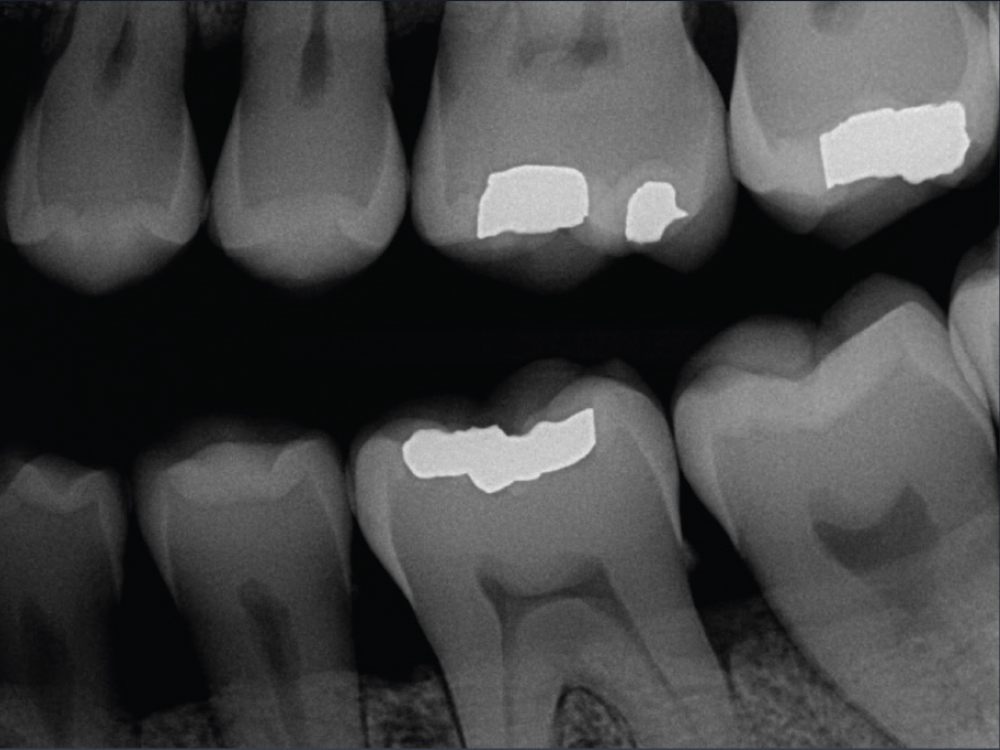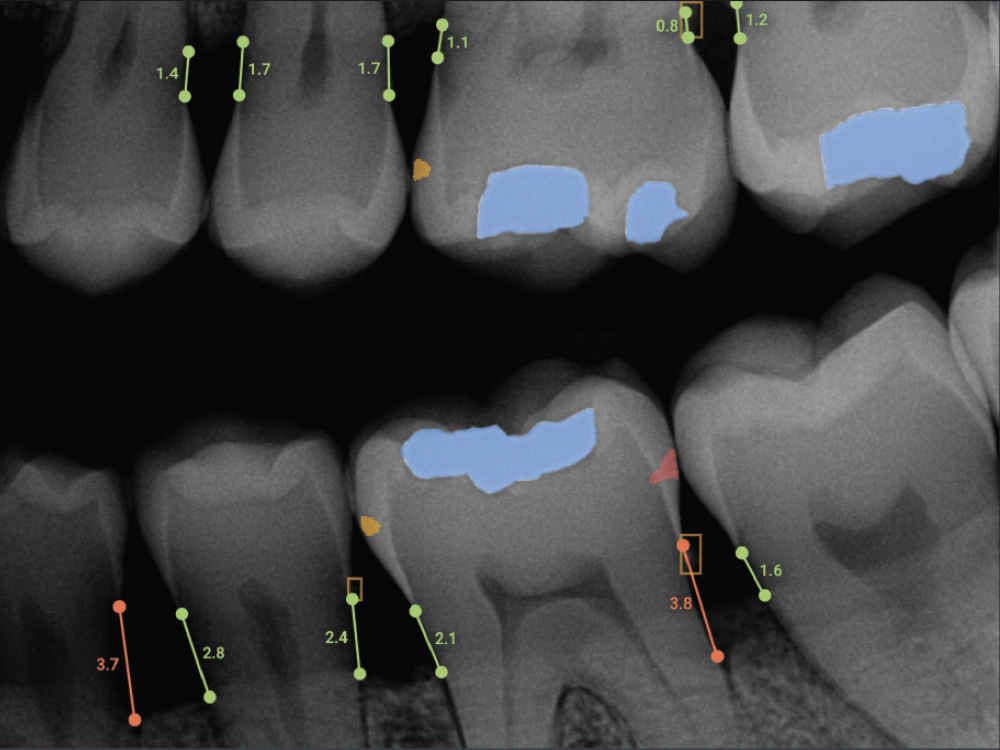Overjet AI: Bringing AI Into the Forefront of X-ray Analysis

I’ve always been passionate about using cutting-edge technology in my practice. From intraoral scanning and in-office milling to streamlining scheduling and patient communication, I strive to stay ahead of the curve with innovative tools that enhance my clinical success and ultimately benefit my patients. Having been a glidewell.io™ In-Office Solution user for several years now, I’m a vocal advocate for using its AI-augmented crown design software to simplify my workflow. So, when I heard about Overjet AI and its ability to automate the process of interpreting X-rays, I knew I had to try it out. What follows is my experience with this software, and how it’s helped improve my patient experience, raise treatment acceptance, and make me a better clinician.
HOW IT WORKS
Overjet AI is an FDA-cleared technology that analyzes dental X-rays in real time, adding color and quantification to areas of concern. The AI-enhanced software outlines decay and highlights carious lesions, bone levels, and calculus in different colors, making challenging clinical conversations far more patient-friendly. The software integrates with digital imaging and practice management systems and conducts an 18-month patient chart review to identify treatment needs. When I open my Daily Patients dashboard, I can see that Overjet has linked my patients’ data from XDR™ (Cyber Medical Imaging, Inc.; Los Angeles, Calif.), my digital radiographic imaging software, and integrated it with Open Dental, my practice management software, to present me with an overlay of my patients’ X-rays. Overjet works its magic completely behind the scenes, automatically analyzing new scans without my input. The fact that it’s cloud-based means that it can be accessed remotely if needed. Even if something happens to my computer, the Overjet data will be secure.
PATIENT EXPERIENCE
Unlike black-and-white X-rays, which can be challenging to interpret for a patient, the color-coded X-ray overlay that Overjet creates makes it much easier for patients to understand their oral health, and reviewing a patient’s chart is now remarkably simple. My appointments have become more interactive, and patients are more engaged in asking questions about their treatment options. As a result, Overjet has increased production at my practice by about 30%, and our case acceptance rate is now about 75%. Because the results are entirely objective, patients now understand that my treatment recommendations are based on quantifiable data rather than subjective interpretation. This technology shifts my role from the doctor who bears bad news to the one who finds a solution.
CASE EXAMPLE
Recently, I had a case that required me to examine the area beneath a crown. It was especially challenging because the crown obstructed the view on the X-ray, and the area in question wasn’t easily identifiable. Thankfully, Overjet was able to diagnose decay on the X-ray, prompting me to investigate further. Once I removed the crown, I was able to confirm the presence of decay on the lingual surface of tooth #20. I then used my fastmill.io™ In-Office Mill to mill and deliver a BruxZir® Esthetic crown chairside. Overjet saved the day for me in this case — failure to detect this lesion could have resulted in severe complications such as infection, abscess and the eventual need for a root canal. Despite our best efforts to practice dentistry with accuracy and precision, human error can still occur. Knowing that I have AI support in Overjet helped this patient avoid extensive, expensive treatment.
ADDITIONAL FEATURES
Beyond the clinical applications of better X-ray analysis, Overjet’s software has proven to be incredibly helpful to me as a business owner. I no longer need to spend time manually inputting and tracking patient information — now, I can bring up an 18-month history report at the click of a button. When reviewing my daily schedule, Overjet even notifies me of any potential areas of concern for specific individuals. This ensures that I have all the necessary information for what I need to investigate further during their appointment.
Diving deeper into the software capabilities, I discovered that it also functions as a valuable tool in tracking metrics such as incidence of decay. With its “Restorative” feature, I can see a comprehensive overview of patient information, including the number of carious lesions, the types of restorations and the progress of specific patients. It can even remind me about unbilled X-rays. This has been incredibly useful in my private practice, and I can only imagine how beneficial this technology could be for DSOs that have thousands of patients to monitor.
CONCLUSION
When considering any new technology, I look at tools that will benefit me, my patients, and my staff, while seamlessly fitting into my practice’s established workflow. Overjet not only fulfills my criteria for a valuable investment, but it also makes my job more fun by adding an interactive tool that helps patients better understand their treatment options.






